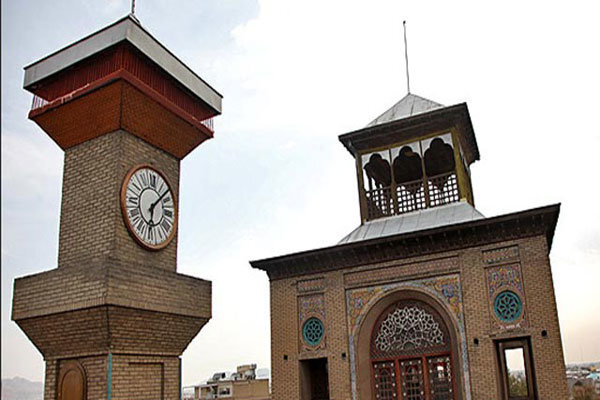Historical clock starts ticking once again in downtown Tehran

TEHRAN – On Monday, a tower-mounted clock, which Queen Victoria of the United Kingdom presented to Naser al-Din Shah in the 19th century, started working once again in downtown Tehran.
“The repairmen of the clock and its bell say that it took 18 months to overhaul them,” ISNA reported.
In the 19th century, the clock was mounted on top of Shams-ol-Emareh (“Edifice of the Sun”) to inform all the people of the then small Tehran passing of the time. The loud sound of the clock, however, caused the settlers in the palace to complain. The shah, Finally, ordered to lessen its sound.
However, the attaint work on the clock did not do any good and muted the clock. The clock remained silent for over a hundred years. This silence finally ended on 12 November 2012 after repairs were finished, and the clock’s bell sounded again for a while.
Although it comprises part of UNESCO-registered Golestan Palace, Shams-ol-Emareh is a masterpiece deserving its own recognition. The five-floor building is symmetrically parallel from the outside as the two towers on the left and right sides of the building are tall enough to give a pleasant view of the surroundings.
Though the whole structure was inspired by European architecture, it has still preserved Persian architectural elements. Its tilework, interior architecture, decorations, and the façade are some of the features of Persian architecture.
The decorative art of Shams ol-Emareh contains beautiful mirror work, fantastic paintings, and fascia on the walls or ceilings. The clock on the outer side of the building is said to be the first clock imported to Iran.
A destination for domestic and international travelers, Golestan Palace is located in the heart and historic core of Tehran. The palace complex is one of the oldest in the Iranian capital, originally built during the Safavid dynasty (1501–1736) in the historic walled city.
Following extensions and additions, it received its most characteristic features in the 19th century, when the palace complex was selected as the royal residence and seat of power by the Qajar ruling family (1789-1925). At present, the Golestan Palace complex consists of eight key palace structures mostly used as museums and the eponymous gardens, a green shared center of the complex, surrounded by an outer wall with gates.
UNESCO has it that the complex exemplifies architectural and artistic achievements of the Qajar era including the introduction of European motifs and styles into Persian arts.
AFM/
